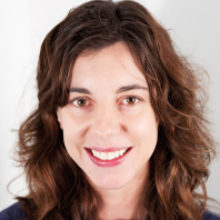Elinor P. Thompson: Chair of the Eukaryotic Division
Issue: Metabolism, Health and Disease
07 May 2019 article

The Society has four Divisions (Eukaryotic, Prokaryotic, Virology and Irish) which consist of Society members who support the organisation and plan sessions and symposia for the Society’s events programme. Each Division Chair and Chair-Elect sit on the Scientific Conferences Committee and the Chair reports into the Society’s governing body, Council. In this article we introduce Elinor Thompson, Chair of the Eukaryotic Division. She tells us about her background and her role on the Division.
I am a Senior Lecturer at the University of Greenwich and my research is mostly on families of membrane proteases involved in signalling and regulation, in a range of model organisms – my work on the social amoeba and model eukaryote Dictyostelium is the reason I became involved with the Eukaryotic Division. My lab has a longstanding interest in organelle function too, and our molecular biology resources mean we are drafted in to help with a whole range of biology or medical projects.
When did you first decide you wanted to do science (and why)?
I thought about this when I was applying to study microbiology at university. The interviewers’ questions at University College London made me realise that scientific, or at least technical and medical, thoughts had always been around me. One of my grandmothers was a midwife and health visitor, the other was a pharmacist, and my father is an engineer. I also grew up in the deepest, nowhere countryside with lots of nature around. As with so many scientists, the most important people were probably my secondary- and high-school science teachers, Mr Cross and Mr Smith – the former lent me and my friend the school telescope to take home at weekends, and the latter did a whole course in microbiology as part of our Biology A level. I am on video somewhere demonstrating sub-culturing at the age of 16! I did work as a scientific writer and editor for a while after graduating, though, until I was sure I wanted to do a PhD.
When did you join the Microbiology Society and why did you join?
I worked at the Society on the Journal of General Virology when I graduated, to take a break from academic life, so I knew about the Society from that point, and joined as soon as I went to University College London to do an MSc then PhD.
Please describe your role on the Division.
I was a Division member and Chair Elect before taking over as Chair, so I have been involved in organising sessions for the conferences for a few years, trying to think of subjects and speakers who will attract a good audience at the Annual Conference. The admin for this is deciding session order, evaluating offered talks and posters for sessions, and the Chair keeps an eye on all the sessions. The nicest jobs are meeting up as a Division to discuss progress, attending the Conference, of course, and the extras such as judging the Sir Howard Dalton Young Microbiology of the Year Competition (which is always humbling in the quality of the talks).
What motivated you to be part of the Division?
I started scientific life as a microbiologist and had been a member of the Society for a long time. My students and I have benefitted from Microbiology Society support and I am honoured to have been able to return the favour.
Are you a member and would you like to join one of the Divisions? Find out more about the Divisions and what they do on our website. The Council and Committees shadowing scheme is also a fantastic opportunity to gain an insight into the work of the Society and gain first-hand experience of our Council and Committee activities.
Image: Elinor P. Thompson.
